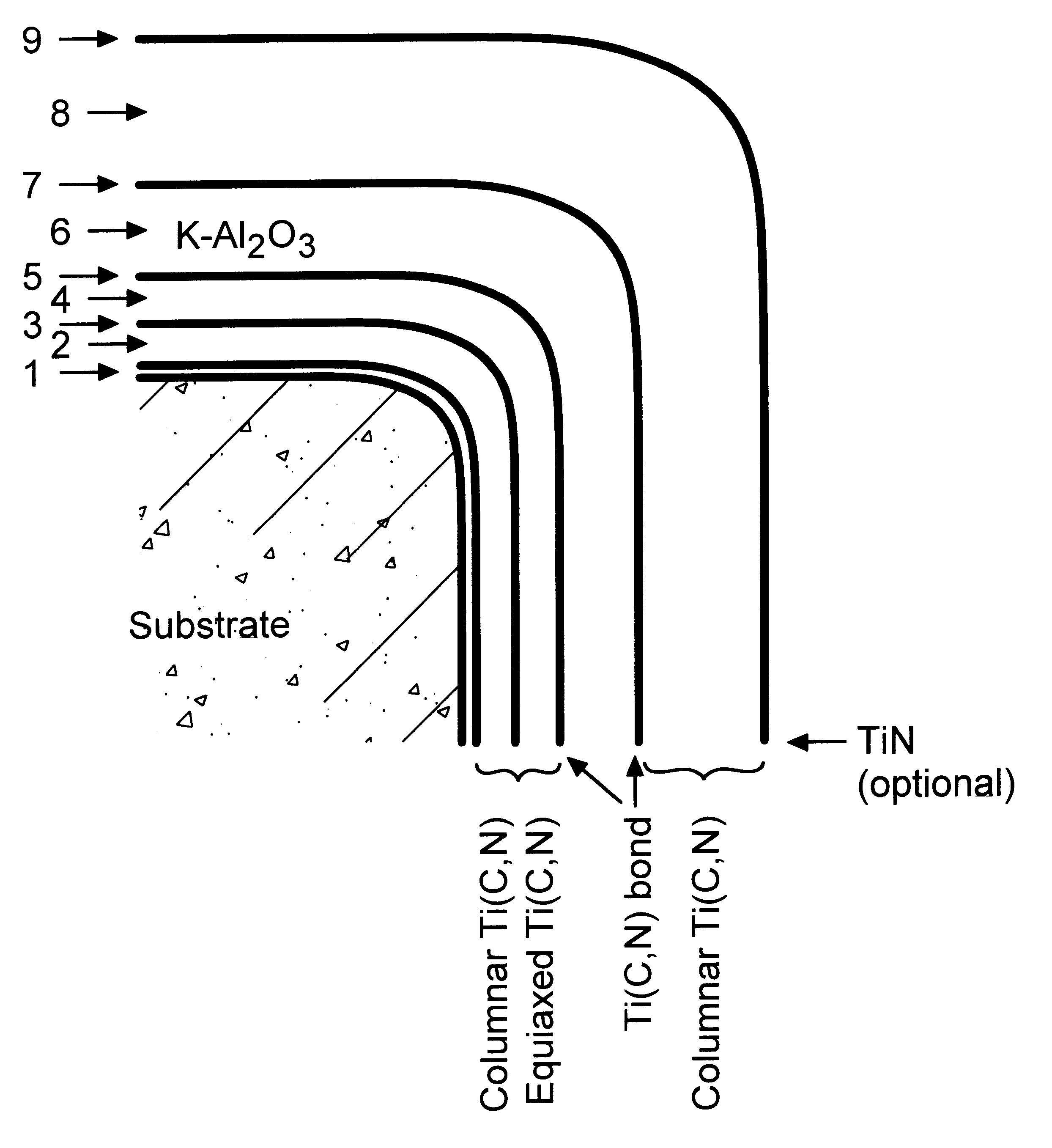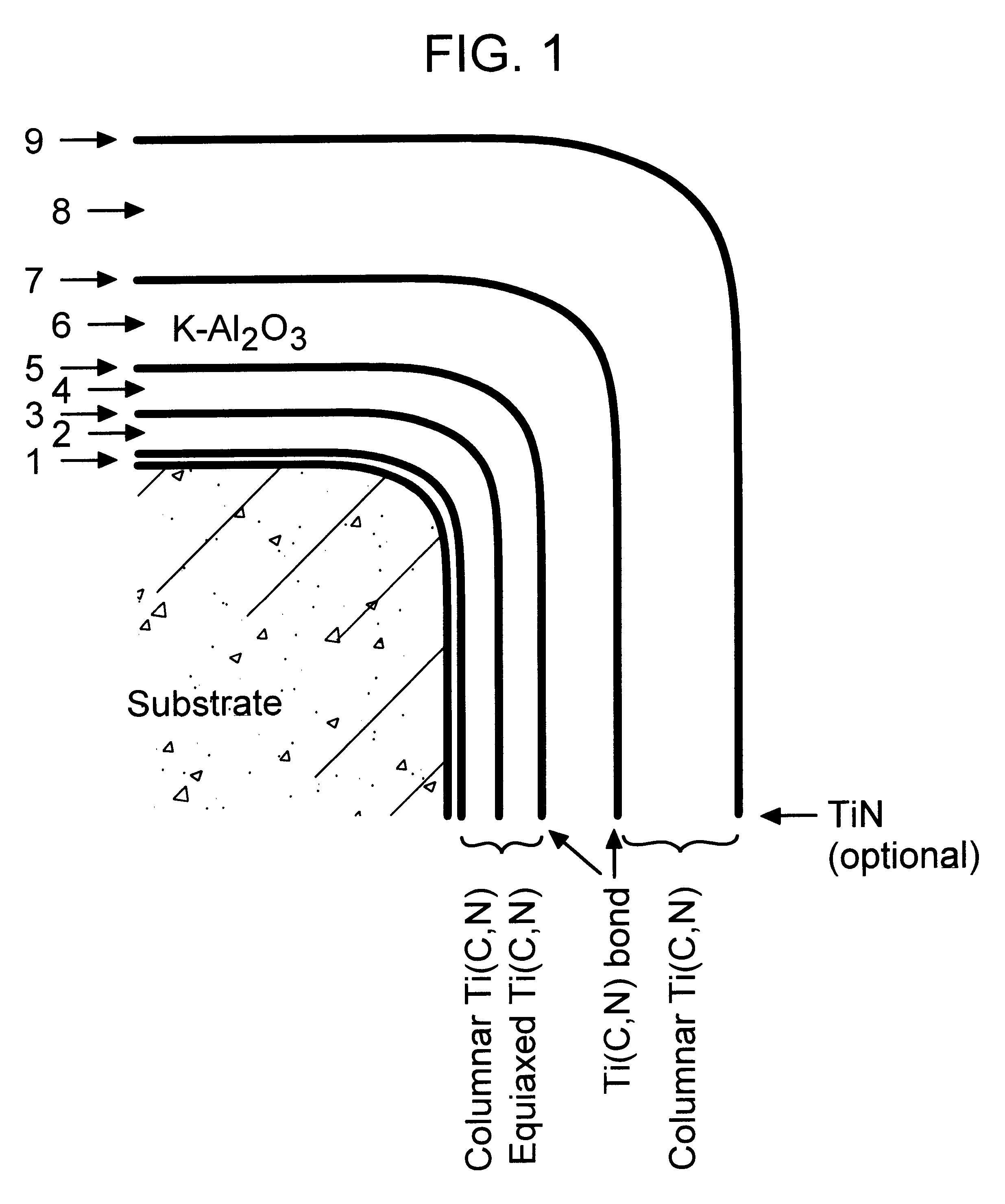Grade for steel
a technology of grade and steel, applied in the field of grade for steel, can solve the problems of accelerated wear, unsatisfactory adhesion of ticn layer to underlying ticn layer, and inability to meet the requirements of abrasive resistance,
- Summary
- Abstract
- Description
- Claims
- Application Information
AI Technical Summary
Benefits of technology
Problems solved by technology
Method used
Image
Examples
example 2
Two samples of the same thickness were deposited:
Coating No. 1
1. TiCN intermediate layer, thickness 2 .mu.m, having a first columnar grained layer with the grains having a width of 0.25 .mu.m and a length of 1.1 .mu.m and a second equiaxed grained layer with the grains having a grain size of 0.5 .mu.m, where the thickness of the columnar grained region was 1.8 .mu.m
2. Bonding layer
3. .kappa.-Al.sub.2 O.sub.3 layer, thickness 4 .mu.m
4. Bonding layer
5. MTCVD layer composed of columnar grains with the grains having a length of 2.4 .mu.m and a width of 0.6 .mu.m, thickness 4 .mu.m, deposited atop the .kappa.-Al.sub.2 O.sub.3 layer. Deposition temperature was 850.degree. C. and the phase transformation of .kappa.-Al.sub.2 O.sub.3 was avoided.
Coating No. 2 (Comparative)
1. TiCN layer, thickness 10 .mu.m, with the grains having a length of 4.5 .mu.m and a width of 0.9 .mu.m, thickness of the columnar grained region was 6 .mu.m.
Cutting tests were carried out in martensitic quenched and tempe...
PUM
| Property | Measurement | Unit |
|---|---|---|
| Thickness | aaaaa | aaaaa |
| Thickness | aaaaa | aaaaa |
| Thickness | aaaaa | aaaaa |
Abstract
Description
Claims
Application Information
 Login to View More
Login to View More - Generate Ideas
- Intellectual Property
- Life Sciences
- Materials
- Tech Scout
- Unparalleled Data Quality
- Higher Quality Content
- 60% Fewer Hallucinations
Browse by: Latest US Patents, China's latest patents, Technical Efficacy Thesaurus, Application Domain, Technology Topic, Popular Technical Reports.
© 2025 PatSnap. All rights reserved.Legal|Privacy policy|Modern Slavery Act Transparency Statement|Sitemap|About US| Contact US: help@patsnap.com


